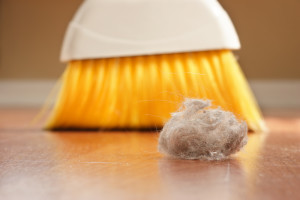 A common allergy people have is a dust mite allergy. Dust mites are microscopic (about 200 microns in size) spider-like mites that live in the dust in the air, your bed, carpet, couch, pillows, and blankets. You shed skin cells in your bed, bedding and everywhere. Dust mites feed on your dead skin cells. The mites and their excrement float in the air on dust particles. When you breathe in these microscopic particles, they can become allergens inside of your body.
A common allergy people have is a dust mite allergy. Dust mites are microscopic (about 200 microns in size) spider-like mites that live in the dust in the air, your bed, carpet, couch, pillows, and blankets. You shed skin cells in your bed, bedding and everywhere. Dust mites feed on your dead skin cells. The mites and their excrement float in the air on dust particles. When you breathe in these microscopic particles, they can become allergens inside of your body.
An allergic response to dust mites can manifest as an itchy feeling at the back of the threat, watery eyes, and a stuffy or runny nose. You could also experience pain in the face from sinus congestion. You could experience shortness of breath, wheezing, coughing, and post nasal drip. You might feel like you have cold symptoms that never go away. If you or anyone in your family has these symptoms, you may have an allergy to dust mites. An air purifier would be a good investment in your home. You and your family may benefit from air purifiers in all of your bedrooms.
 The best place to put an air purifier is in your bedroom, because this is where the largest concentration of dust mites will be. Your bed and bedding is the place where dust mites breed and multiply. Dust mites and their bi-products become allergens when your body’s immune system reacts to these particles as harmful invaders. Your immune system can’t tell the difference between a dust mite and a bacterium; therefore, your immune system goes on the attack, and you start getting allergy symptoms.
The best place to put an air purifier is in your bedroom, because this is where the largest concentration of dust mites will be. Your bed and bedding is the place where dust mites breed and multiply. Dust mites and their bi-products become allergens when your body’s immune system reacts to these particles as harmful invaders. Your immune system can’t tell the difference between a dust mite and a bacterium; therefore, your immune system goes on the attack, and you start getting allergy symptoms.
If you are allergic to dust mites, you will likely have a runny or stuffy nose. You may start sneezing, as your body tries to expel the allergens. You may also cough, and have symptoms of asthma. The best way to get rid of a dust mite allergy is to get rid of the dust mites. You can vacuum your home, and launder your sheets and bedding, but you won’t get rid of dust mites until you completely remove their food source. Dust mites will feed on airborne particles, including skin cells. A good air purifier with a HEPA filter will clean the air and destroy any airborne dust mites as they pass through the filter.
When you purchase an air purifier for your home or office, you should measure the dimensions of the space that the purifier will be cleaning. It won’t do much good if you buy an air purifier that is too small to do the job. When buying an air purifier, you should get one that captures particles that are just a few microns in size. An air purifier with a HEPA filter will be efficient to remove and kill any floating dust mites, and the impurities that the mites eat.
 Dust mites are in the cleanest of homes; the best thing you can do to keep them out of your home is the vacuum regularly, wash and dry stuffed toys, change your bed linins frequently, and invest in a good air purifier. In the mean time, you might need to take some anti-allergy medication to get rid of your allergy symptoms. You can get some good over-the-counter anti-allergy medications on the market. However, if you need a longer acting medication to treat your allergic response, you may need a prescription medication such as Zyrtec, and Singulair. If you have any breathing problems, your doctor may order corticosteroid inhalers, such as Flovent and Pulmicort to reduce inflammation in the respiratory tract.
Dust mites are in the cleanest of homes; the best thing you can do to keep them out of your home is the vacuum regularly, wash and dry stuffed toys, change your bed linins frequently, and invest in a good air purifier. In the mean time, you might need to take some anti-allergy medication to get rid of your allergy symptoms. You can get some good over-the-counter anti-allergy medications on the market. However, if you need a longer acting medication to treat your allergic response, you may need a prescription medication such as Zyrtec, and Singulair. If you have any breathing problems, your doctor may order corticosteroid inhalers, such as Flovent and Pulmicort to reduce inflammation in the respiratory tract.
If you have a good air purifier in your home and office over a period of time, the air in your home and office will be cleaned 24 hours a day. After a day or two of breathing cleaner air, an allergic response to dust mites should go away when you get rid of them. When you remove their food source, they will die and be removed through regular cleaning and through the air filter.
